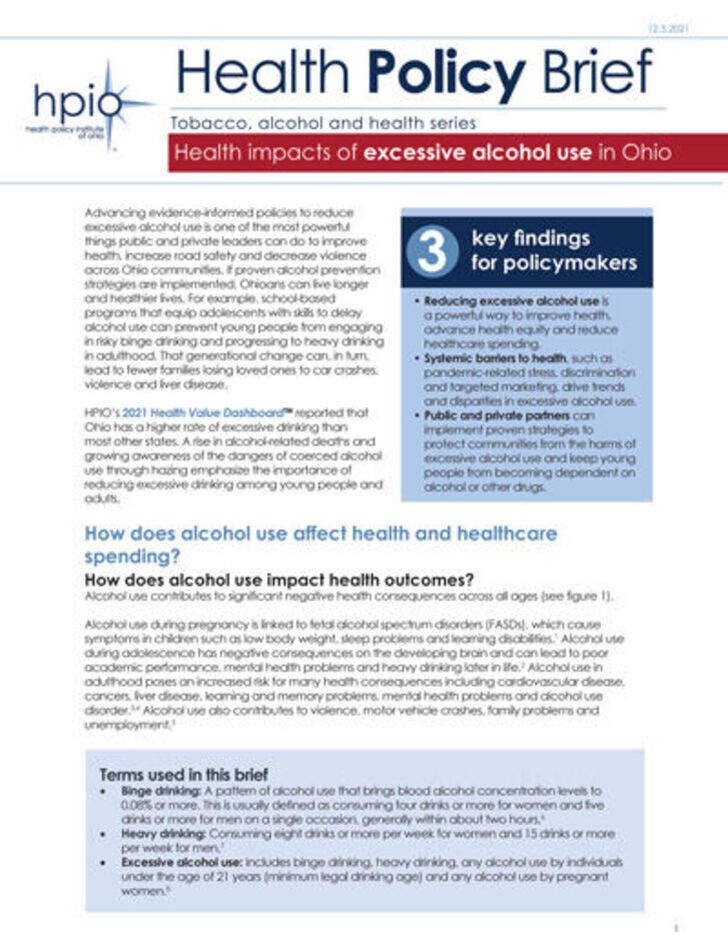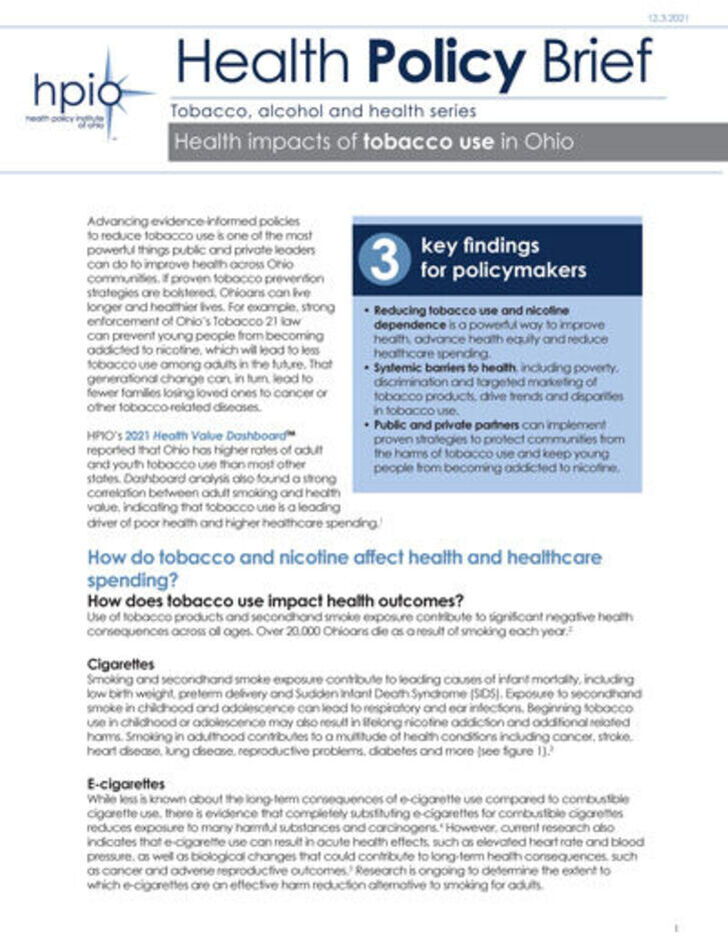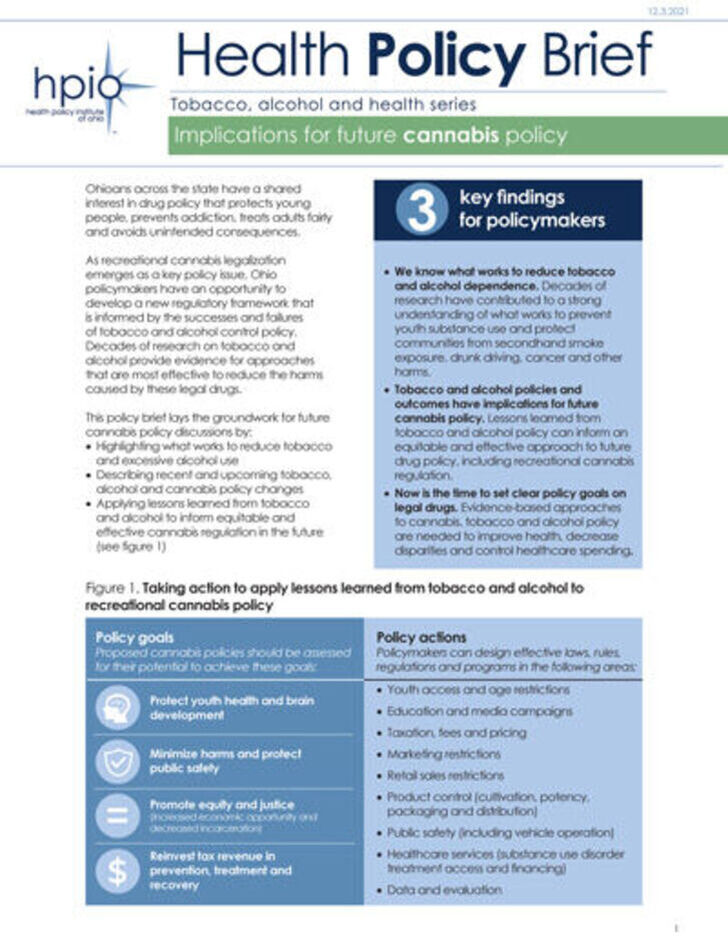Alcohol, tobacco and cannabis
Graphics
Use HPIO graphics and data in your work. To use the data graphics in your presentations, click here to access the slides on Google Drive, click “File” and then “Download.” This will allow the option to download individual slides or the full deck into PowerPoint slides, a jpg, pdf or other available media files.
Note: These publications were published in 2020 and 2021. For most-recent data, consult the data sources at the end of the publication.
Data points: Tobacco, alcohol and health series
Health impacts of excessive alcohol use in Ohio
Key data findings
- Those diagnosed with alcohol use disorder were 2.3 times more likely to have major depressive disorder and 1.7 times more likely to have dysthymia (chronic, long-lasting depression) than those without alcohol use disorder.
- In 2010, excessive alcohol use was estimated to cost the U.S. $249 billion, with costs to the healthcare system totaling $28 billion and additional losses of $179 billion and $25 billion in workplace productivity and criminal justice, respectively.
- While binge drinking remains more common among males than females, the percent of Ohio women who reported binge drinking during the past month increased 15% from 2010 to 2020, compared to a 17% decline for men during that time.
Suggested citation: “Tobacco, alcohol, and health series: Health impacts of excessive alcohol use in Ohio,” Health Policy Institute of Ohio, 2021.
Health impacts of tobacco use in Ohio
Key data findings
- Over 20,000 Ohioans die as a result of smoking each year.
- The percent of 18-24-year olds reporting e-cigarette use jumped 77% from 2016 to 2020, making this the group of adults with the highest rate of e-cigarette use in 2020 (19%).
- HPIO analysis finds that, after adjusting for inflation, the total annual healthcare cost of cigarette smoking to Ohio is approximately $6.8 billion (in 2020 dollars).
Suggested citation: “Tobacco, alcohol and health series: Health impacts of tobacco use in Ohio,” Health Policy Institute of Ohio, 2021.
Implications for future cannabis policy
Key data findings
- Ohio’s performance on the evidence-based approaches [to reducing tobacco- and alcohol-related harms] has been mixed, leaving policy gaps in tobacco and excessive alcohol use prevention that lead to illness, injury and death.
- In 2016, the Ohio General Assembly passed House Bill 523, creating the Ohio Medical Marijuana Control Program. As of September 2021, there are 27 licensed cultivators, 57 dispensaries and 202,666 registered patients in the state.
- If recreational use is legalized, as it has been in 17 other states, Ohio leaders will need to develop new rules and regulations. Advocates are calling for “marijuana to be regulated like alcohol.”
Suggested citation: “Tobacco, alcohol and health series: Implications for future cannabis policy,” Health Policy Institute of Ohio, 2021.
Policy considerations: Cannabis regulation in Ohio, 2024
This brief gives an overview of the current status of recreational cannabis legislation under consideration in the General Assembly to outline what lessons can be learned from current tobacco and alcohol policy to inform future cannabis regulation.
To use the data graphics in your presentations, click here to access the slides on Google Drive, click “File” and then “Download.” This will allow the option to download individual slides or the full deck into PowerPoint slides, a jpg, pdf or other available media files.



